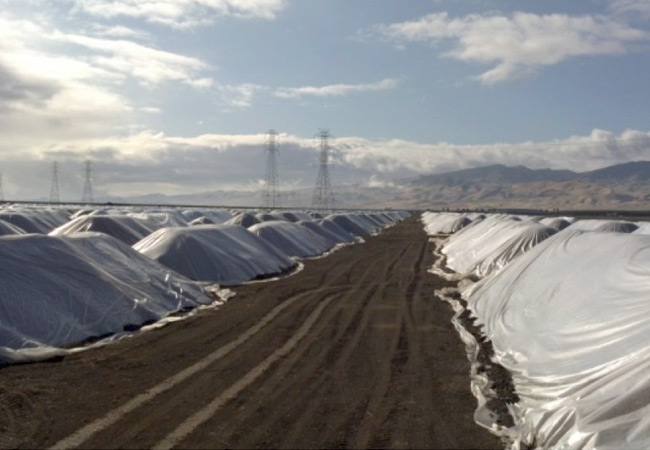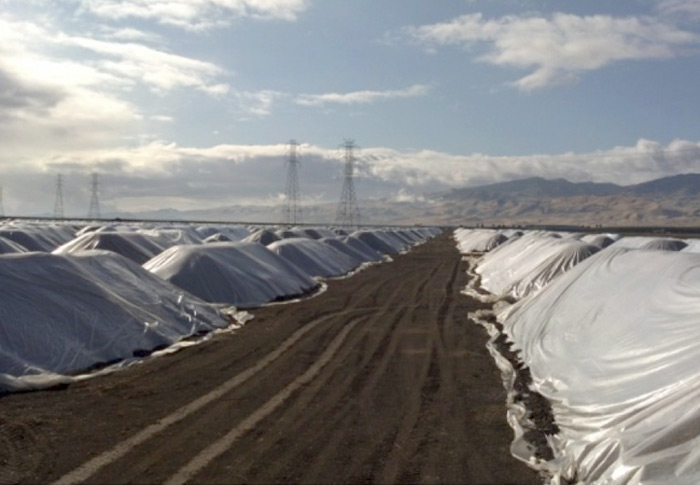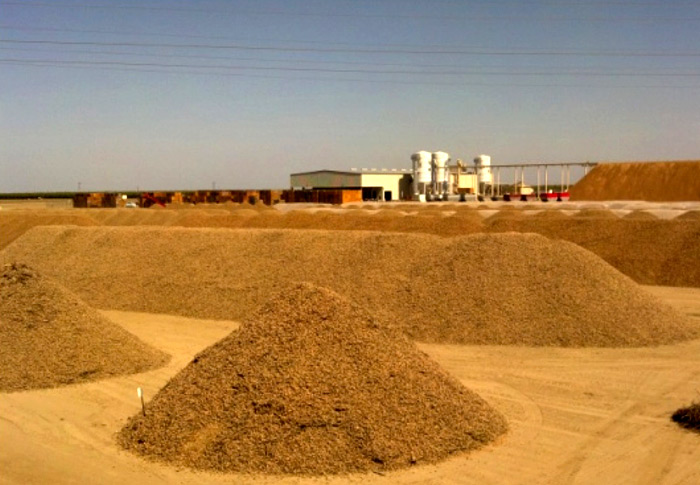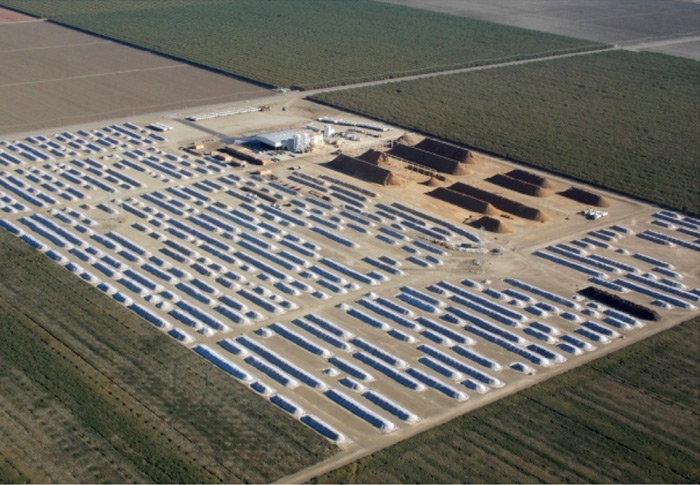The Stockpiling Process
Almond harvesting completely outpaces the industry’s processing ability, and a portion of the crop is normally stored in stockpiles until it can be picked up for shelling. There’s a lot of recordkeeping, handling equipment, labor and TLC required for stockpiling almonds. Here’s a primer on how we do it!
It is crucial to protect the crop during this period. Stockpiles consist of loads received from growers, and all fields and varieties are kept separate. First the condition of the storage yard must be immaculate. The stockpiling area must be clean and free of objects, debris, and weeds that may harbor potentially damaging pests. The yard must be graded with drainage provided to prevent standing water after a rain.
Trailers are unloaded with belt elevators after checking the identification of the load, the grower, field, and variety to ensure that it is placed in the correct location. Once the stockpile is completed, a crew rakes and shapes the pile to remove sticks that can puncture the tarp, and smooth out any peaks or valleys to give the tarp a tight fit. The tarp is pulled over the pile and sealed around the base with a perimeter berm of clean sand. All stockpiles excepting organic, are treated to control insect pests, primarily navel orange worm and ants.




